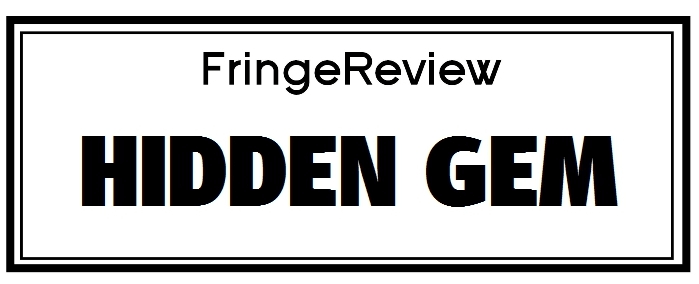Brighton Year-Round 2022
Yoko Ono and Paul Gregory Piano/Guitar Recital
Chapel Royal, North Road, Brighton

Genre: Live Music
Venue: Chapel Royal, North Road, Brighton
Festival: Brighton Year-Round
Low Down
Chapel Royal concert organisers Yoko Ono and Paul Gregory Piano/Guitar themselves give a recital of Radamés Gnattali, John Corigliano, Carlos Monastrelli and Manuel Ponce. September 27th
Review
A remarkable duo not just Yoko Ono and Paul Gregory who run the concerts, but the combination of their instruments, Piano and Guitar. With the power of the concert grand it seems an unequal balance, but there were such combos – not least with Sor, Giuliani and Paganini combining forces, Paganini playing the guitar, and the early fortepiano and harpsichord not proving such overwhelming sonorities.
As we learn from Gregory, the 1920s saw a revival of both guitar and harpsichord – and a combing of them too. But that’s to anticipate.
What we got first were two performances by Ono, one by the Italian heritage Brazilian composer/conductor Radamés Gnattali (1906-88), son of an anarchist conductor and a pianist, was himself a concert pianist also the famous writer of concert popular and film music that’s not travelled sadly outside Brazil.
This piece is a kind of prelude that sounds incredibly like a lateish Mazurka by Szymanowski. On this evidence he seems worth unearthing for a whole concert. Spiky, Brazilian folk-inflected, definitely 20th century but held by the clarity of neo-classicism and the reaction against pure expressionism pre first War, this is a real find.
John Corigliano (b. 1938) is far better-known, particularly in the States, where his AIDS-inspired Symphony No. 1 of 1988 became the musical elegy for a generation, full of fury – not least at the U.DS, government – love and rage. Corigliano had to overcome the scepticism of his father, no banker but Concert-Master of the New York Phil, Leader as we say over here. He was finally convinced when his son won a competition in 1964 with his Violin Sonata. It’s the composer in embryo but he developed further: a style both post-romantic and inflected with a propulsive post-minimalist sound, learned to a degree from John Adams.
His Ostinato on Beethoven’s Symphony No. 7 slow movement is phenomenal, and phenomenal is a good word for Ono’s performance, at full stretch, picking up the almost morse-code (like the 5th) ostinato pattern from the elegiac slow movement but also the main theme, Corigliano plays with these in an expressive envelope of great fire and suggestive development, sleights of development, distinctly his own voice. You feel this it’s like the masterpiece of a great improvisor, but it’s worked out in the way say a chaconne is. There’s a return to the same ostinato, the same theme, but varied, with sideslips into newer darker harmonic territory and a terrific stretto passage two-thirds through that brings the piece to a climax before it returns to the hushed quotations of the opening, all passion, for the moment at least, spent. It really is a great work.
Gregory moved centre-stage now, for a solo work by Carlos Monastrelli Two Pieces which direct translation is un-PC and can be roughly described as Two Character Pieces. They’re really attractive post Villa-Lobos music, without his bite, but with a nearer sense of folk music.
Following this Mexican Manuel M. Ponce (1882-1948) wasn’t overwhelmed by being the year of Stravinsky, Kodaly, Turina and Szymanowski and the year after Bartok. He was slightly older than the great Mexican duo who ushered in a truly remarkable generation – Carlos Chávez (1899–1978) · Silvestre Revueltas (1899–1940).
But he paved the way with a pretty big international reputation, especially for guitar which he holds to this day. He wrote for guitar, certainly, but he wrote a Violin Concerto of 1943, the first piece I was able to buy, and ones for a guitar and piano, substantial orchestral works too.
This is important because 1926 Paris finds Ponce bang in the middle of that revival Gregory mentioned earlier: harpsichord and guitar. Not only that, but clearly Ponce, renowned for guitar music was able to adapt it to other instruments.
We’ve no harpsichord here for this Duo Sonata, but Ono fleshes out the piano brilliantly with an animated allegro non troppo, so we hear Gregory stage left weaving in and out of patterns in a n compelling brilliant manner.
The slow movement Gregory himself wittily refers to as Andante Monastro, as it really does conjure the sonance of plain-chant and monks singing: it’s hypnotic, softly carillon-like, antiphonal in its slow sway between silences and tracing delicate filigrees you’d not expect of either instrument, int a sound-world wholly other.
He finale really is where Ono’s allowed to let rip, and the guitar’s instructed to paly sotto voce which seems rather unfair in such a sonic inequality. It’s vivid though and as if the piano acquires a distant echo-chamber of sonics you can’t put a name to. Gregory and Ono are as in synch here as they’ve been throughout, and the affable echo-chamber of pinging and forte moves swiftly to its close.
I’ve only come across the Corigliano before, and never heard of the two composers. Revelatory and a spellbinding introduction than in these performers hands, couldn’t be bettered.


















































